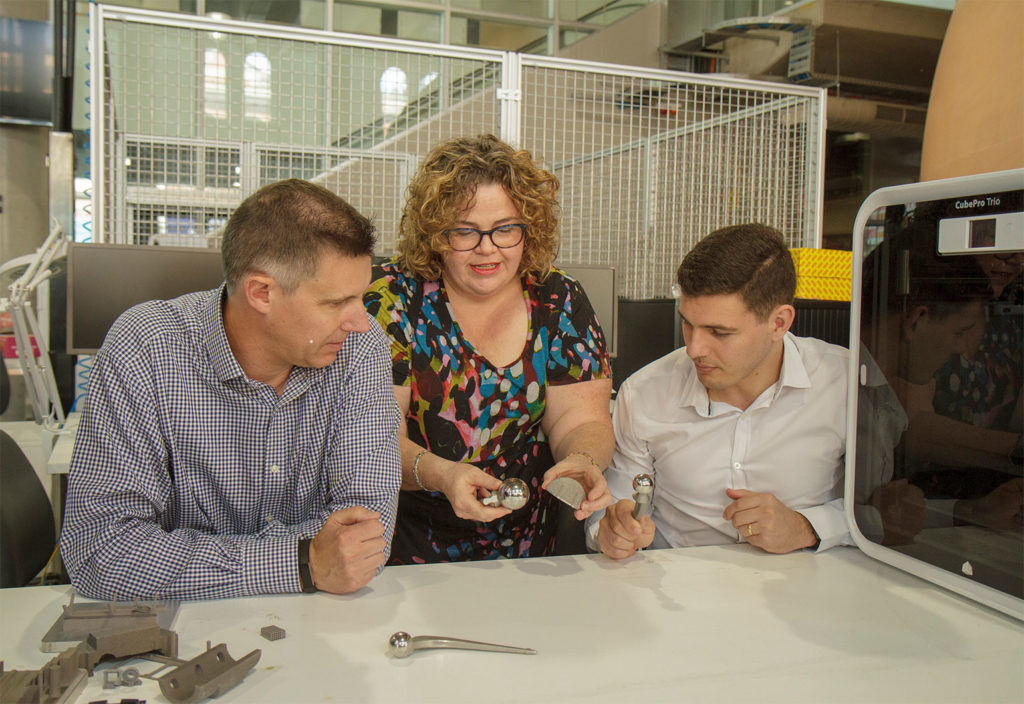Australia’s medtech industry received a vital shot in the arm earlier this year with the launch of the Victorian Medical Device Partnering Program (MDPP).
The Swinburne University of Technology-led partnership identifies early-stage healthcare solutions and collaborates with industry partners to develop medical technologies with global market potential to improve healthcare systems.
The $2 million program is funded through LaunchVic, the State Government agency charged with growing the Victorian startup industry, and is an extension of the South Australian model, based at Flinders University, which was launched in 2009.
Since its inception, MDPP has developed innovative methods for delivering medical procedures, including airway management and knee reconstructions, surgical hypothermia, safer administration of drugs in emergency, and prevention of heat stroke and dehydration.
Off to a healthy start
The Victorian arm is already following in the success and represents the next step toward the national expansion of the MDPP. Swinburne University is working in partnership with CSIRO, The University of Melbourne, Monash University, RMIT University, St Vincents’ Hospital, LaTrobe University, Baker Institute, Bionics Institute, Australian National Fabrication Facility (ANFF) and BioMedical Research Victoria.
Victoria MDPP Director and Professor of Biomedical Engineering Sally McArthur said that as the program has been adapted from the South Australian model, it has hit the ground running and is ready to collaborate with individuals and organisations with ideas to reshape the future of healthcare.
“We are looking for clients and we are excited to talk to anyone who has an idea for medical or assisted technologies,” she said.
“Everybody has really good ideas for how things should be done, because we live it; we all experience it as users of healthcare. The more diverse group of people we have influencing the types of products and services we have, the better they will match the needs of the population.”
One of the first projects in Victoria to come through MDPP is an innovative new design for aircraft seating that could make the transportation of patients by air cheaper and safer.
The prototype was the brainchild of Medical Connect and is now in development with Swinburne’s Centre for Design Innovation to explore how the cabins of commercial airlines can be reconfigured to accommodate an aviation-approved airline stretcher.
McArthur said MDPP has scope to deliver many more potentially life-saving projects.
“We have committed to 200 clients in two years, to running 60 workshops and delivering to around 20 projects,” she said.
“It’s a big funnel.”
How the program works
As part of the process, clients work with the MDPP team to determine the feasibility of their idea. McArthur said the first step is to ask questions to test the idea, both practically and commercially.
“First of all, we ask, ‘What is this going to solve clinically? How will it fit into clinical practice?’,” she explained.
“We look at the technology and see if there is a way of building it, or if the technology already exists and if it fits the space and is usable.”
MDPP then coordinates a workshop for the client with experts in relevant sectors to discuss and develop the idea towards a prototype or proof of concept. Clients also have the knowledge that their intellectual property rights will be retained.
“One of the goals of the workshop is to identify a small project and then work out what it would look like,” McArthur said.
“Then the client applies for funding from us to complete the project with the research and development partner we’ve identified.
“It then goes through a second process where we have an independent assessment panel with people from the sector who provide additional feedback and approve the funding.”
Connecting through partnerships
Bringing together experts from a range of industries is also a key strength of the program. Not only does it allow the idea to be tested for usability, but the commercial viability is also crucial to its success.
“The industry partnerships that have been formed mean that there is input at every stage and the ideas are looked at from every angle,” McArthur said.
“In each workshop, there is a team of expert advisers from across the clinical, research and commercial community. It is a very collaborative approach with great engagement from all the partners.”
McArthur said the program also provides entrepreneurs with a space to build the prototype for their idea and to work with experts.
“We do a lot of work in training entrepreneurs but there is virtually nowhere to build the thing you want to make and to test it,” she said.
“This program fills a gap in the market by providing the expertise and clinical connections needed to build or test the prototype for their idea.
“This is the opportunity for researchers to deliver a project on small scale as a funded researcher or consultant.
“These start-ups need people with this kind of energy as well as the connections across the wider Health Technologies community.
“It’s about today’s problems being solved by today’s technologies.”
